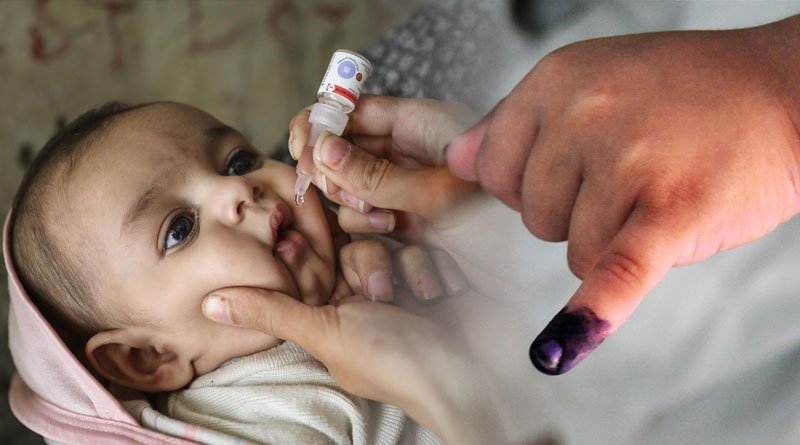Albert Sabin’s Oral Polio Vaccine is the best vaccine for eliminating polio in poor settings where clean water and sanitation are lacking.

The Democratic Republic of the Congo (DRC) and neighbouring Burundi both recently experienced paralysis due to poliovirus strains derived from an oral polio vaccine intended to prevent the disease, according to a report released last week by the Global Polio Eradication Initiative (GPEI).
Unfortunately, these seven may not have stood out from the crowd given how frequently such cases are reported—786 in Africa, Yemen, and other places. According to a statement released by GPEI on March 16, the new polio vaccine, which was painstakingly created to specifically avoid this problem, is now being held accountable for these cases.
This month marks the second anniversary of the introduction of the novel oral polio vaccine type 2 (nOPV2), and public health professionals have been closely observing its use to see if it might occasionally cause outbreaks.
The head of GPEI, Aidan O’Leary, describes it as “disappointing but not entirely unexpected.” The World Health Organization’s Simona Zipursky, who serves as co-chair of the GPEI’s nOPV2 working group, believes that for the past two years, the question has been when, not if, such cases would happen. She adds, “But you always hope you’re wrong.
Albert Sabin’s Oral Polio Vaccine is the best vaccine for eliminating polio in poor settings where clean water and sanitation are lacking. Data from the initial rollout show it is far better than the one it has largely replaced, monovalent OPV2 (mOPV2).
The risk of sparking outbreaks with nOPV2 is “much, much lower.” Children shed the weakened virus from the vaccine in their stool for a short time after they receive the oral drops, conferring immunity even on those who are not vaccinated.
The issue is that in regions with low rates of polio vaccination, the vaccine virus can, in extremely rare circumstances, continue to spread among the unvaccinated or inadequately immunized for months before acquiring sufficient mutations to return to its paralytic form.
Poliovirus type 2, one of three serotypes, is responsible for this most frequently. GPEI has been running in circles for years, using mOPV2 to stop one type 2 outbreak only to start more.
An international group of researchers was hired in 2011 and given funding from the Gates Foundation to develop a technical fix.
They modified the genome of the same type 2 Sabin vaccine virus in a number of locations to reduce the likelihood that it would revert. In contrast to mOPV2, it was hoped that nOPV2 would not cause new outbreaks, or at the very least, occur much less frequently.
The vaccine was much more genetically stable and just as safe and effective as mOPV2, according to Bandyopadhyay’s analysis of clinical and preclinical data. The true value of the new vaccine could not be determined until it was widely used and closely monitored, however, because these reversions are uncommon occurrences.
GPEI and its country partners have successfully administered nearly 600 million doses of the new vaccine since March 2021 to combat outbreaks in 28 different nations.
The seven paralysis cases were caused by two distinct “emergences,” or when two vaccine viruses independently reverted in the DRC’s South Kivu and Tanganyika provinces before spreading.
The South Kivu strain of the virus, which has been found in five sewage samples in a neighbouring province, is linked to the one case in Burundi, which is located in the Bujumbura Rural province.
O’Leary asserts that “this is obviously an extremely rare event.” In the future, the task will be to determine how rare it is, according to Zipursky. We will keep collecting data to fully understand the genetic stability of [nOPV2]. According to a preliminary analysis, mOPV2 would have been more effective at this large scale, resulting in between 30 and 40 emergences as opposed to just two, according to Bandyopadhyay.
It’s crucial that vaccine experts evaluate the relative merits of the two oral options right now, according to O’Leary. But he emphasises that the issue of low vaccination coverage needs to receive just as much attention, if not more.
Likewise, Bandyopadhyay. “There is always a risk that a live, attenuated vaccine virus will revert if there is persistently low immunisation coverage in a community.”
Where effective vaccination campaigns have been conducted, many outbreaks have been stopped by both mOPV2 and nOPV2.
But in some areas of the DRC and Burundi, those can be challenging to pull off. Eastern DRC, where these paralytic viral variants emerged, is one of the seven regions in the world with the highest risk of polio outbreaks, which are notoriously difficult to contain once they begin.
Conflict and political unrest in the DRC make it challenging to reach many children with vaccines. Additionally, it has been battling concurrent disease outbreaks that are all competing for attention. Low rates of routine vaccination exist.
To fully comprehend what is occurring with the [nOPV2] vaccine, GPEI “needs to delve deep and work through all the surveillance data in both countries,” according to O’Leary. In addition, he asserts that the programme must step up its efforts to reach all the kids who were not given the vaccine.